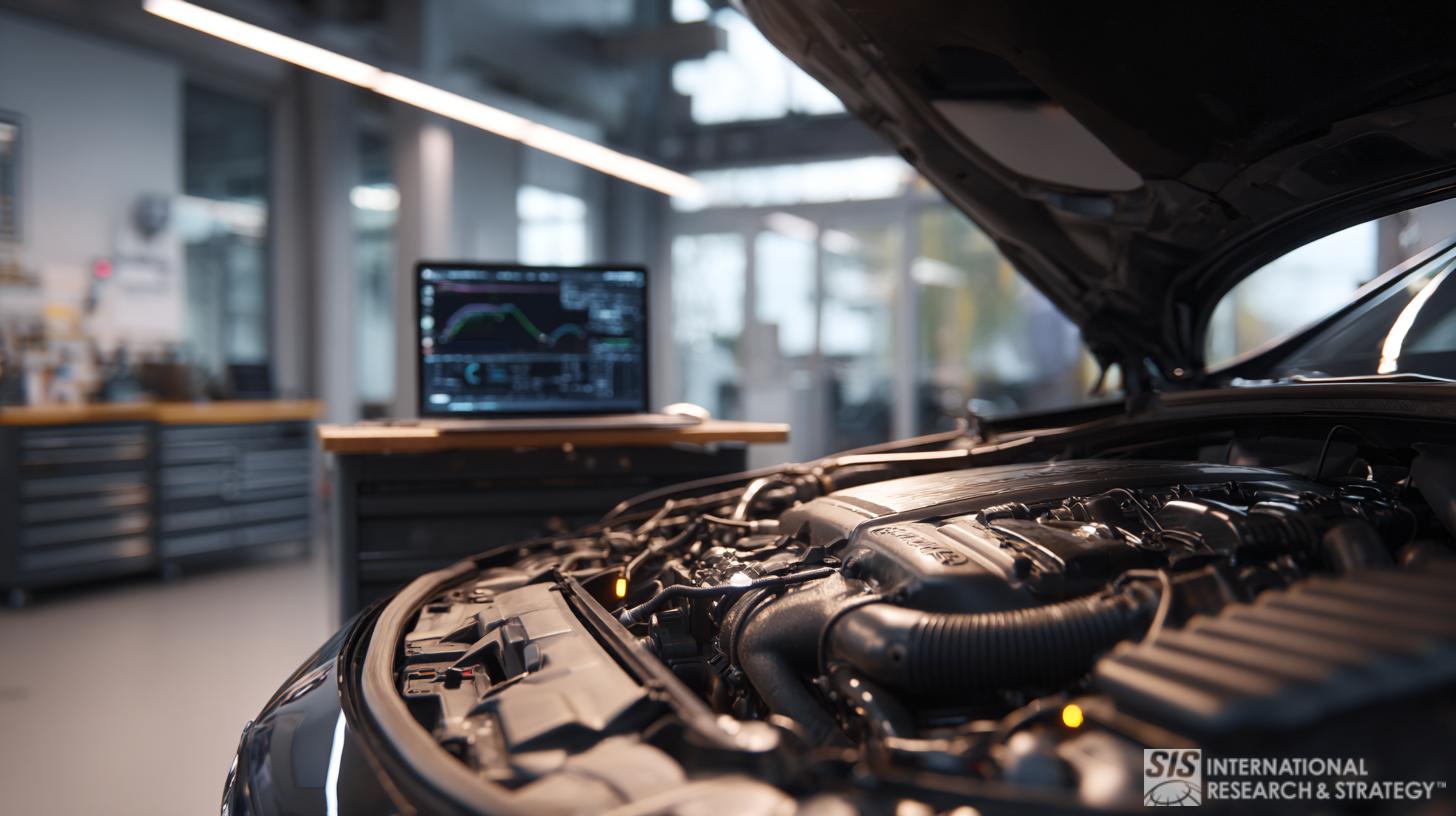Automotive Market Research and Car Clinics

Automotive market research unveils the answers, offering insights into emerging trends, competitive strategies, and consumer demands. As the industry continues to evolve at breakneck speed, leveraging such research becomes paramount for companies aiming to secure their position, innovate effectively, and thrive in an era defined by unprecedented change and opportunity.
Have you ever wondered how car manufacturers decide on the design, features, or technology of the next big model? The answer lies in automotive market research. This research analyzes consumer behavior, market dynamics, technological innovations, and many other factors. As the automotive industry evolves, market research plays an instrumental role in shaping its trajectory.
What Is Automotive Market Research and Why Is It Important?
Automotive market research is not merely about counting the number of cars sold or identifying the season’s most popular color. It’s a multidimensional approach that seeks to understand the nuances of consumer preferences, market dynamics, competitive landscapes, and emerging technological shifts.
It provides organizations with the insight and data to conceptualize, manufacture, and customize vehicles to their customers’ desires and perceptions. Research also guides the development of new advertisements, messaging, and marketing materials. As new technologies are increasingly included in vehicle products, innovation is an essential priority for many car manufacturers and Original Equipment Manufacturers (OEMs).
Connectivity and technology pose the question of whether owning a vehicle is essential. Ride-sharing is an obvious example. Consumers pay for the use of a car only as needed. However, they sacrifice the benefits and responsibilities of individual ownership. Another Digital Disruptor is Autonomous Vehicles, which are on the horizon. Vehicles are increasingly coming equipped with smart technologies.
The last few years have seen the rise of Connected Cars, which have caused manufacturers to integrate Big Data, Cloud Computing, and the Internet of Things into car designs. More than ever, automakers need to predict consumer demand, preferences, and trends. The largest source of revenue for automakers is still consumer sales. Market Research ultimately uncovers consumer trends, tastes, and behavior and is, therefore, a high priority for industry players.
Critical Benefits of Automotive Market Research

The benefits of automotive market research extend far beyond mere data collection. These research activities equip automotive businesses with the tools and insights they need to thrive in an industry characterized by rapid technological advancements and shifting consumer preferences. Below are some of the pronounced benefits:
• Consumer-Centric Approach: Through market research, businesses can capture the voice of the customer, ensuring that products and services are tailored to genuine consumer needs and desires. This results in better customer satisfaction and loyalty.
• Innovation Boost: The feedback loop created by regular market research propels innovation, guiding R&D teams on what features or technologies must be introduced or improved.
• Market Entry Strategy: For automotive businesses looking to enter new markets, research provides invaluable insights into local preferences, competitive landscapes, and regulatory challenges. This reduces the guesswork and uncertainties associated with international expansions.
• Optimal Pricing: This market research offers insights into consumers’ price sensitivity, allowing businesses to determine the best pricing strategies that maximize profitability while ensuring market share.
• Enhanced Branding: Understanding the market’s perception of a brand compared to competitors can help refine brand positioning, messaging, and overall branding strategies.
• Tackling Challenges Head-On: From supply chain disruptions to technological shifts like the rise of electric vehicles, automotive market research equips businesses with the knowledge to anticipate challenges and develop strategies to tackle them proactively.
• Relationship Building: By understanding the needs and pain points of dealers, suppliers, and other stakeholders, businesses can forge stronger, more collaborative relationships that benefit the entire ecosystem.
Who Uses Automotive Market Research
- Automotive Manufacturers leverage market research to understand consumer preferences, identify emerging trends, and assess market demand for different vehicle segments.
- Suppliers and Component Manufacturers rely on automotive market research to stay informed about market trends, technological advancements, and regulatory changes that may impact their business operations.
- Automotive Dealerships utilize market research to understand local market conditions, consumer preferences, and competitive landscapes.
- Aftermarket Service Providers use market research to identify opportunities for growth and expansion.
- Investors and Financial Institutions engage in automotive market research to evaluate investment opportunities, assess industry trends, and make informed decisions about allocating capital.
Critical Success Factors for a Successful Automotive Market Research

Several critical success factors contribute to the effectiveness and success of automotive market research initiatives. Here are some key factors to consider:
- In-depth Understanding of Objectives: Defining research objectives is essential for ensuring that automotive market research initiatives are focused, relevant, and actionable. By identifying specific research goals, such as understanding consumer preferences, assessing market demand, or evaluating competitive landscapes, businesses can tailor research methodologies and data collection strategies to achieve meaningful insights that support strategic decision-making.
- Comprehensive Data Collection: Gathering comprehensive and accurate data is critical for obtaining reliable insights and making informed decisions. Automotive market research should combine qualitative and quantitative research methods to collect data from diverse sources and perspectives, including surveys, interviews, focus groups, observation, and data analytics.
- Strategic Analysis and Interpretation: Analyzing and interpreting research findings requires a strategic approach to identify key insights, trends, and implications for business strategy. Market research should go beyond data collection to provide actionable insights and strategic recommendations that address business objectives and challenges.
- Timely and Actionable Reporting: Communicating research findings in a timely and actionable manner is essential for maximizing the impact of automotive market research. Research reports should be clear, concise, and focused on key insights, recommendations, and implications for decision-making.
- Continuous Learning and Adaptation: The automotive industry constantly evolves, driven by technological advancements, changing consumer preferences, and competitive dynamics. To stay ahead of the curve, businesses must embrace a culture of continuous learning and adaptation, incorporating feedback from research initiatives into ongoing strategic planning and decision-making processes.
Emerging Markets vs Mature Markets
In the automotive industry, the distinction between emerging markets and mature markets plays a significant role in shaping market dynamics, consumer behavior, and business strategies:
• Emerging Markets: These markets, which include countries in regions such as Asia-Pacific, Latin America, and Africa, exhibit growing demand for automobiles due to expanding middle-class populations, infrastructure development, and urbanization trends. Automotive companies operating in emerging markets must navigate challenges such as diverse consumer preferences, regulatory complexities, and infrastructure limitations while capitalizing on opportunities for market penetration, brand expansion, and revenue growth.
• Mature Markets: Mature markets, encompassing regions such as North America, Western Europe, and Japan, are characterized by established automotive industries, saturated markets, and slower growth rates compared to emerging markets. In mature markets, automotive companies face challenges such as market saturation, intense competition, and shifting consumer preferences toward alternative mobility solutions such as electric vehicles and ride-sharing services. To succeed in mature markets, automotive companies must focus on innovation, differentiation, and customer-centric strategies to maintain market share, drive brand loyalty, and sustain profitability in a highly competitive landscape.
Regional Insights
Regional insights are crucial in automotive market research, providing valuable perspectives on market dynamics, consumer behavior, and competitive landscapes across different geographic regions. Here are some key regional insights to consider:
North America:
The North American automotive market is characterized by mature markets such as the United States and Canada, where consumer preferences, economic conditions, and regulatory requirements drive automotive sales. In recent years, the region has witnessed growing demand for electric vehicles (EVs), SUVs, and pickup trucks, as well as increasing interest in advanced driver assistance systems (ADAS) and connected car technologies.
Europe:
The European automotive market is characterized by strict emissions regulations, shifting consumer preferences toward electric and hybrid vehicles, and increasing investments in autonomous driving technologies. Additionally, the region has seen a rise in car-sharing and mobility-as-a-service (MaaS) platforms, driven by urbanization trends and sustainability initiatives.
Asia-Pacific:
The Asia-Pacific region is the largest automotive market globally, with countries such as China, Japan, and India driving demand for automobiles due to population growth, urbanization, and rising incomes. In China, the world’s largest automotive market, government incentives for electric vehicles and advancements in technology and infrastructure are fueling growth in the electric vehicle segment. In India, increasing urbanization and infrastructure development drive demand for passenger vehicles, while the commercial vehicle segment remains robust due to logistics and transportation needs.
Latin America:
Diverse consumer preferences, economic volatility, and regulatory challenges drive the automotive market. Countries such as Brazil and Mexico are key automotive markets in the region, with growing demand for passenger vehicles, light trucks, and commercial vehicles. However, market growth in Latin America is often influenced by currency fluctuations, political instability, and trade policies, requiring businesses to navigate uncertainties and adapt their strategies accordingly.
Expected Results from SIS International’s Automotive Market Research

When businesses partner with SIS International for automotive market research, they can expect a range of valuable outcomes and benefits tailored to their specific needs and objectives:
Insightful Analysis:
SIS delivers insightful analysis and actionable insights that enable businesses to make informed decisions and drive strategic initiatives. By leveraging our expertise in automotive market research, we provide clients with a deep understanding of market dynamics, consumer behavior, competitive landscapes, and industry trends, empowering them to capitalize on opportunities, mitigate risks, and achieve their business goals.
Data-driven Recommendations:
Our automotive market research is grounded in robust data collection methodologies and analytical techniques that yield reliable, accurate, and actionable recommendations. Whether businesses seek to optimize product development, refine marketing strategies, assess market entry opportunities, or evaluate competitive threats, SIS International delivers data-driven recommendations that support informed decision-making and drive business success.
Strategic Differentiation:
SIS helps businesses identify unique value propositions, competitive advantages, and areas for differentiation that resonate with target audiences and drive brand loyalty. By leveraging our strategic insights and market intelligence, clients can develop compelling value propositions, innovative product offerings, and differentiated customer experiences that set them apart from competitors and drive business growth.
Enhanced ROI:
Ultimately, partnering with SIS International for automotive market research delivers a tangible return on investment (ROI) by enabling businesses to make smarter, more strategic decisions that drive growth, profitability, and long-term success. By leveraging our expertise, resources, and industry knowledge, clients can maximize the impact of their investments, accelerate business growth, and achieve their desired outcomes in the competitive automotive market.
Opportunities in Automotive Market Research
The automotive industry’s ongoing transformation offers many opportunities, and automotive market research is the key to unlocking them. Let’s uncover the multitude of opportunities businesses can seize:
• Data-Driven Personalization: With the explosion of data from connected cars, businesses have an unprecedented opportunity to offer personalized services. Market research enables firms to analyze consumer driving patterns, preferences, and behaviors to craft customized offerings.
• Partnerships with Tech Giants: Partnering with tech giants can be a strategic move as cars transform into mobile tech hubs. Collaborations with companies like Apple, Google, or Amazon can elevate the in-car experience. Insights from automotive market research can help identify the most profitable and sought-after integrations.
• Innovative Financing Options: With a shift away from traditional car ownership towards leasing and subscription models, there’s an opening for innovative financing solutions. Market research can help businesses gauge consumer interest in such offerings and tailor them accordingly.
• Green Technology Investments: As sustainability becomes paramount, investing in green technologies, from battery developments to lightweight materials, is lucrative. Automotive market research can guide investments by pinpointing technologies with the highest potential ROI.
• Diversification into Mobility Services: Beyond selling cars, there’s an opportunity to offer mobility services. Ride-sharing, car-sharing, and e-scooter services are booming in urban areas. This market research can help businesses find the right niche and market segment for expansion.
Challenges of Automotive Market Research for Businesses
While filled with opportunities, the automotive industry’s evolving landscape is not without its hurdles. Automotive market research provides businesses with a clear perspective on these challenges, aiding them in devising strategies to navigate and overcome them:
• Stringent Regulations: Governments worldwide are setting aggressive emissions, safety, and tech integrations targets. These regulations vary significantly across countries, making global automotive market research complex.
• Supply Chain Disruptions: The automotive supply chain is under strain, from semiconductor shortages to disruptions due to global events. Market research must anticipate such challenges and their impact on consumer sentiment and purchasing behavior.
• High Investment Risks: The automotive industry demands high capital investments, especially when venturing into new tech. Automotive market research aims to ensure these investments are data-backed and strategically sound.
• Keeping Pace with Consumer Expectations: Today’s consumer expects a lot from their vehicle – not just in terms of performance but also in tech integrations, safety features, and eco-friendliness. As revealed through automotive market research, meeting these expectations is a soaring business demand.
Industry Attractiveness: Porter’s Five Forces Analysis of the Automotive Market

Porter’s Five Forces analysis provides a framework for assessing the attractiveness and competitiveness of the automotive industry. Here’s how each force applies:
- Threat of New Entrants: The automotive industry is characterized by high barriers to entry, including significant capital requirements, economies of scale, and regulatory barriers. Established automakers benefit from brand loyalty, established distribution networks, and proprietary technology, making it difficult for new entrants to gain a foothold in the market.
- Bargaining Power of Suppliers: The automotive industry relies on a complex network of suppliers and component manufacturers to source materials, parts, and technologies for vehicle production. Suppliers wield varying degrees of bargaining power depending on factors such as supply concentration, switching costs, and differentiation of products.
- Bargaining Power of Buyers: Automotive consumers have relatively high bargaining power due to factors such as product differentiation, price sensitivity, and availability of alternative options. Buyers can easily compare prices, features, and specifications across different brands and models, putting pressure on automakers to offer competitive pricing, innovative features, and attractive financing options to attract and retain customers.
- Threat of Substitute Products or Services: The automotive industry faces threats from substitute products and services, including alternative transportation modes such as public transit, ride-sharing services, and micromobility solutions. Additionally, advancements in technology, such as electric vehicles, autonomous driving, and mobility-as-a-service (MaaS) platforms, are reshaping consumer preferences and behaviors, creating new alternatives to traditional car ownership.
- Intensity of Competitive Rivalry: The automotive industry is characterized by intense competition among established automakers and emerging players from adjacent industries such as technology and mobility services. Competitive rivalry is fueled by factors such as product differentiation, pricing strategies, marketing campaigns, and technological innovation. To gain a competitive edge, automakers must differentiate their offerings, enhance brand loyalty, and invest in research and development to develop next-generation vehicles and mobility solutions that resonate with consumers and drive market share growth.
Industry Attractiveness: SWOT Analysis of the Automotive Market
A SWOT analysis provides a comprehensive overview of the strengths, weaknesses, opportunities, and threats facing the automotive industry:
- Strengths:
- Established Brands: The automotive industry boasts solid and well-established brands with global recognition and brand loyalty, which can drive sales and customer retention.
- Technological Innovation: Automotive companies invest heavily in research and development, leading to technological advancements such as electric vehicles, autonomous driving, and connected car technologies.
- Global Supply Chain: The automotive industry benefits from a complex global supply chain network, enabling efficient sourcing of materials, parts, and components from various regions around the world.
- Weaknesses:
- High Capital Intensity: Automotive manufacturing requires significant capital investment in production facilities, research and development, and distribution networks, leading to high fixed costs and financial risks.
- Regulatory Compliance: Compliance with stringent environmental regulations, safety standards, and emissions requirements adds complexity and costs to automotive manufacturing operations.
- Cyclical Demand: The automotive industry is subject to cyclical demand patterns, with sales and profitability heavily influenced by economic conditions, consumer confidence, and interest rates.
- Opportunities:
- Electric Vehicles: Growing demand for electric vehicles presents opportunities for automotive companies to capitalize on the shift toward electrification and sustainability.
- Emerging Markets: Emerging markets in Asia-Pacific, Latin America, and Africa offer untapped growth opportunities for automotive manufacturers seeking to expand their presence and market share.
- Mobility Services: The rise of shared mobility services, autonomous driving technology, and mobility-as-a-service (MaaS) platforms creates opportunities for automotive companies to diversify revenue streams and address evolving consumer preferences.
- Threats:
- Disruptive Technologies: Disruptive technologies such as electric vehicles, autonomous driving, and ride-sharing services threaten traditional automotive business models and market dynamics.
- Intense Competition: The automotive industry is highly competitive, with established automakers, new entrants, and tech companies vying for market share and profitability.
- Supply Chain Disruptions: Vulnerabilities in the global supply chain, including geopolitical tensions, natural disasters, and trade disruptions, can impact production schedules, increase costs, and disrupt operations for automotive manufacturers.
How SIS International’s Automotive Market Research Helps Businesses
SIS International offers comprehensive automotive market research solutions designed to help businesses navigate the complexities of the automotive industry and achieve their strategic objectives. Here’s how our services can benefit businesses:
Reduce Risk:
By providing insights into market trends, consumer preferences, and competitive landscapes, SIS International’s automotive market research helps businesses mitigate risks associated with product development, market entry, and strategic decision-making.
Boost Revenue:
Our automotive market research gives businesses valuable insights into market demand, consumer behavior, and competitive positioning, enabling them to develop targeted strategies that drive revenue growth.
Save Money and Time:
By leveraging our expertise, resources, and industry knowledge, businesses can save time and resources on costly trial-and-error approaches. Our automotive market research helps businesses make informed decisions quickly and efficiently, minimizing wasted resources and accelerating time-to-market for new products, services, and initiatives.
Accelerate Growth and Innovation:
SIS International’s automotive market research gives businesses the insights and intelligence to drive growth and innovation in a rapidly evolving industry landscape.
Boost ROI:
Ultimately, partnering with SIS International for automotive market research delivers a tangible return on investment (ROI) by enabling businesses to make smarter, more strategic decisions that drive growth, profitability, and long-term success.
Our Facility Location in New York
11 E 22nd Street, Floor 2, New York, NY 10010 T: +1(212) 505-6805
About SIS International
SIS International offers Quantitative, Qualitative, and Strategy Research. We provide data, tools, strategies, reports, and insights for decision-making. We also conduct interviews, surveys, focus groups, and other Market Research methods and approaches. Contact us for your next Market Research project.

